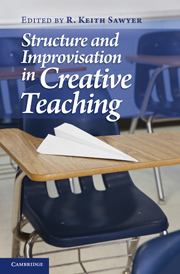1 - What Makes Good Teachers Great?
The Artful Balance of Structure and Improvisation
Published online by Cambridge University Press: 05 June 2012
Summary
In the 1970s and 1980s, educational researchers began to study what makes good teachers great. One common approach of these early researchers was to compare experienced teachers with novice teachers; they found that experienced teachers have a greater repertoire of scripts than novice teachers – standard sequences of activities, or responses to students, that work in specific situations. Researchers also found, however, that experienced teachers were better at improvising in response to each class’s unique flow; in fact, they tended to spend less advance time planning than novice teachers (Berliner & Tikunoff, 1976; Borko & Livingston, 1989; Yinger, 1987). Experienced teachers do two apparently contradictory things: They use more structures, and yet they improvise more.
These early studies of teacher expertise focused on the structures that teachers created themselves, as ways to enhance teaching, manage classrooms, and handle problems that may arise. In addition, many of the structures that guide teaching are mandated by law, administration, or state and federal guidelines. Modern schools are complex organizations, with relatively rigid structures and bureaucratic and administrative frameworks that constrain what teachers can do in classrooms (Olson, 2003).
- Type
- Chapter
- Information
- Structure and Improvisation in Creative Teaching , pp. 1 - 24Publisher: Cambridge University PressPrint publication year: 2011
References
- 52
- Cited by

